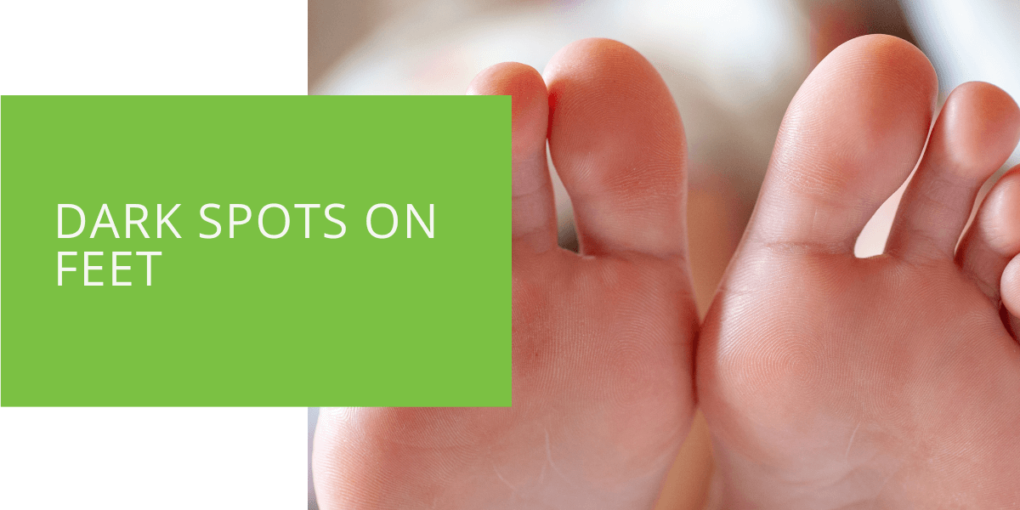Understanding Dark Spots on Feet
Dark spots on the feet, also known as foot discoloration or hyperpigmentation, can concern many individuals. While they may not always indicate a serious condition, it's essential to understand their causes, risks, and preventive measures to maintain optimal foot health. In this comprehensive guide, we'll delve into the intricacies of dark spots on feet, from common causes to preventive strategies and treatment options.
Key Takeaways
- Proper foot hygiene, including regular washing and drying, is essential for preventing dark spots on the feet.
- Limiting sun exposure and using sunscreen can help protect against sun-induced discoloration and reduce the risk of skin cancer.
- Regular skin checks and prompt medical attention for any concerning changes can aid in the early detection and treatment of dark spots and related conditions.
Overview of Dark Spots on Feet
Dark spots on the feet refer to areas of skin that appear darker than the surrounding tissue. They can manifest as brown spots, patches, or areas of discoloration. While dark spots may be a cosmetic concern for some, they can also signal underlying health issues requiring attention.
Common Causes of Dark Spots on Feet
Venous Stasis Dermatitis
Venous stasis dermatitis occurs when poor circulation in the lower legs leads to fluid buildup and inflammation. This condition can darken skin, particularly around the ankles and lower legs.
Dermatitis and Skin Conditions
Various dermatological conditions, such as eczema and psoriasis, can cause dark spots on the feet due to inflammation and pigmentation changes in the skin.
Hemosiderin Deposition
Hemosiderin is a pigment derived from the breakdown of red blood cells. When blood leaks from damaged veins into the surrounding tissue, hemosiderin can accumulate, leading to dark discoloration known as hemosiderin staining.
Sun Exposure
Excessive sun exposure can cause hyperpigmentation on the feet, particularly in areas not typically covered by footwear. UV radiation stimulates melanocytes, the cells responsible for producing melanin, resulting in dark spots and sun-induced discoloration.

Identifying Dark Spots on the Feet
Recognizing dark spots on the feet involves understanding their appearance and distinguishing them from other skin abnormalities, such as moles or melanoma. While dark spots are typically uniform in color and size, melanoma may exhibit irregular borders and changes in shape or size over time.
Risks and Complications
Ignoring dark spots on the feet can have serious consequences, including an increased risk of developing skin cancer, such as melanoma. Melanoma is a potentially life-threatening skin cancer that can arise from abnormal moles or pigmented lesions.
Preventive Measures for Dark Spots on Feet
Proper Foot Hygiene Practices
Maintaining good foot hygiene prevents dark spots and other skin issues. This includes regularly washing and drying the feet, trimming toenails, and wearing clean, breathable socks and shoes.
Protecting Feet from Sun Exposure
Limiting sun exposure and using sunscreen on exposed areas of the feet can help prevent sun-induced dark spots and reduce the risk of skin cancer.
Regular Skin Checks and Self-Examinations
Performing regular skin checks can help detect any changes or abnormalities early on. Pay attention to the color, size, and shape of existing moles or dark spots, and consult a podiatrist if you notice any changes.
Managing Underlying Conditions
Suppose you have underlying medical conditions contributing to dark spots on your feet, such as venous insufficiency or dermatitis. In that case, it's essential to manage these conditions effectively with the guidance of a healthcare professional.
Treatment Options for Dark Spots on Feet
Treatment for dark spots on the feet depends on the underlying cause and severity of the condition. Options may include topical treatments, laser therapy, or surgical intervention for more severe cases.
Lifestyle Changes to Address Dark Spots
In addition to medical treatments, lifestyle changes can help improve skin health and prevent dark spots on the feet. These may include adopting a balanced diet rich in antioxidants, staying hydrated, and maintaining a healthy weight to reduce pressure on the lower extremities.
Conclusion
Understanding the causes and preventive measures for dark spots on the feet is crucial for maintaining optimal foot health. By practicing proper foot hygiene, protecting against sun exposure, and seeking timely medical attention for any concerning changes, individuals can minimize their risk of developing dark spots and related complications. At ePodiatrists, we're dedicated to helping our patients achieve healthy, beautiful feet. If you have any concerns about dark spots or other foot issues, don't hesitate to schedule an appointment with us today.

